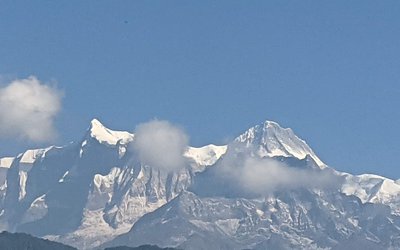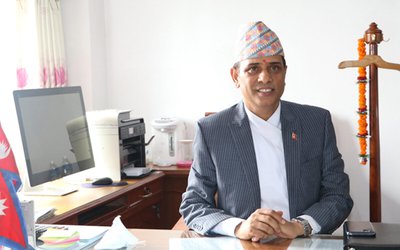Down the ages we have had our system of education based on Gurukuls. A new chapter started when Jung Bahadur following his assessment of the Englishman in India, decided to foster friendship with them. Knowing the pitfalls of history and the 1816 Treaty of Sugauli, he started in 1854 the school for Rana children at Thapathali for teaching English too. Dhir Shumsher, in turn, started the Teen Dhara Pakshala for the proper continuation of Sanskrit studies, albeit only among the Brahmins. His son Bir, in his effort to do good deeds tried to expand what his father had done. Of course it was Dev Shumsher, the liberal Rana premier of 114 days, who then allowed children of ordinary Nepali citizens to be admitted to what had been an exclusive Durbar High School for the Rana children only. His further step of opening vernacular schools on a country wide basis to educate the children of the ordinary Nepali did not succeed for following his overthrow, the schools gradually closed. Chandra Shumsher when he inaugurated, Tri-Chandra College is said to have remarked that this would bring about downfall of the Ranas. In the present context is the closure of government run Community Colleges a symptom of public apathy?
In 1950, at the downfall of the Ranas regime the percentage of Nepalis educated was very meagre. During King Mahendra’s reign there was a push towards “Education for All” and though all this was very high sounding, not much was really achieved. Presently there is a proliferation of the Montesorri system in the urban areas of Nepal. The literacy rate climbed up to72% and 49% for males and females respectively by 2011. The average was at 60%.
After 1950, a number of schools teaching both English and Nepali gradually increased. Our heartfelt thanks need to be given to individuals in different parts of Nepal, especially along our southern border, who started schools or even hired teachers from India for the education of Nepali children, either in private homes or in private schools. Later in the seventies, many enterprising individuals opened up pre-school, primary and secondary education facilities in different parts of the country.
The start of the New Education System Plan (NESP) in 1972 was said to be the death knell for private enterprise in education as many of the privately started colleges, providing of the 11th & 12th year education were taken under the education plan that was being implemented. This may have been so, but it was a temporary setback for from 1980, private campuses were allowed. This was then followed by the 10+2 H.S. Schools which then dominated the education scene in Nepal.
This was a era when more money was being spent for university education facilities, than for Primary and secondary education which should have been the birthright of a Nepali. Now this act has brought Nepal to the worldwide threshold of twelve years, as being school education.
It was of course the Maoist who infiltrated into the schools and even forced children to become cadres. Some of the political parties pay lip service to the concept that school children should not be taken to political rallies and schools should be off bounds to politicians and left alone to conduct their programmes. The new act has stated that teachers should not be party functionaries but has not barred teachers from taking up party membership. Some rethought and enforcement is essential.
Many feel that the commercially run institutions offering education up to Class 12 and where many of the political leaders have surreptitiously invested as a safe haven have been fleecing those poor Nepalis, who are prepared to spend their hard earned money for the education of their children so that they have a better chance to survive in the present day world. Many institutions give a raw deal. They charge admission fee every year when the individual is continuing his / her education in the same school. The special books or college stationary or the development funds are other methods utilised. However, the fact that many privately run schools / institutions are still better is confirmed by the fact that government school teachers, not having faith in the system that they themselves run, tend to send their own children to the private schools. Ke garne?
A point to remember is that in both the UK and in the USA one can be prosecuted for not sending one’s children to school. In the States one is even allowed to educate ones children’s by one ’s self too. Because the basic education standard is so high it is no wonder that people like Bill Gates, Steven Spielberg and Steve Jobs, who did not complete university education became success stories. The academic people gave them honorary degrees instead ! Nearer home we have Ram Dev as an example.
By the endorsement of the Education Bill ( 8th Amendment) by the House on 4th June, the government has shown that it intends to set right the various liabilities that have surfaced, or developed into the system after the passing of the Education Act of 2028 BS. There is now provision for having a mandatory 13th year where one is supposed to do Vocational training. This act however, can only be implemented once the President gives her assent to it.
What most parents are still worried about is the cost of higher education in this country. In Germany and other countries in Europe even University education is free for the deserving candidates. Present scenario in America is that Senator Bernie Sanders has been advocating that University Education in the USA should be free or at least subsidised so that deserving candidates can avail of it. We need our political leaders to think of such issues rather than when they will be able to sit on the PM’s Musical Chair seat.

Hemang Dixit
The author writes fiction under the name of Mani Dixit. Website: www.hdixit.org.np. Twitter: @manidixithd
- Top Heavy
- Sep 20, 2023
- Most Able?
- Sep 04, 2023
- Changing Times
- Aug 21, 2023
- Nepali Shenanigans
- Aug 03, 2023
- Budget Naataks
- Jun 29, 2023















